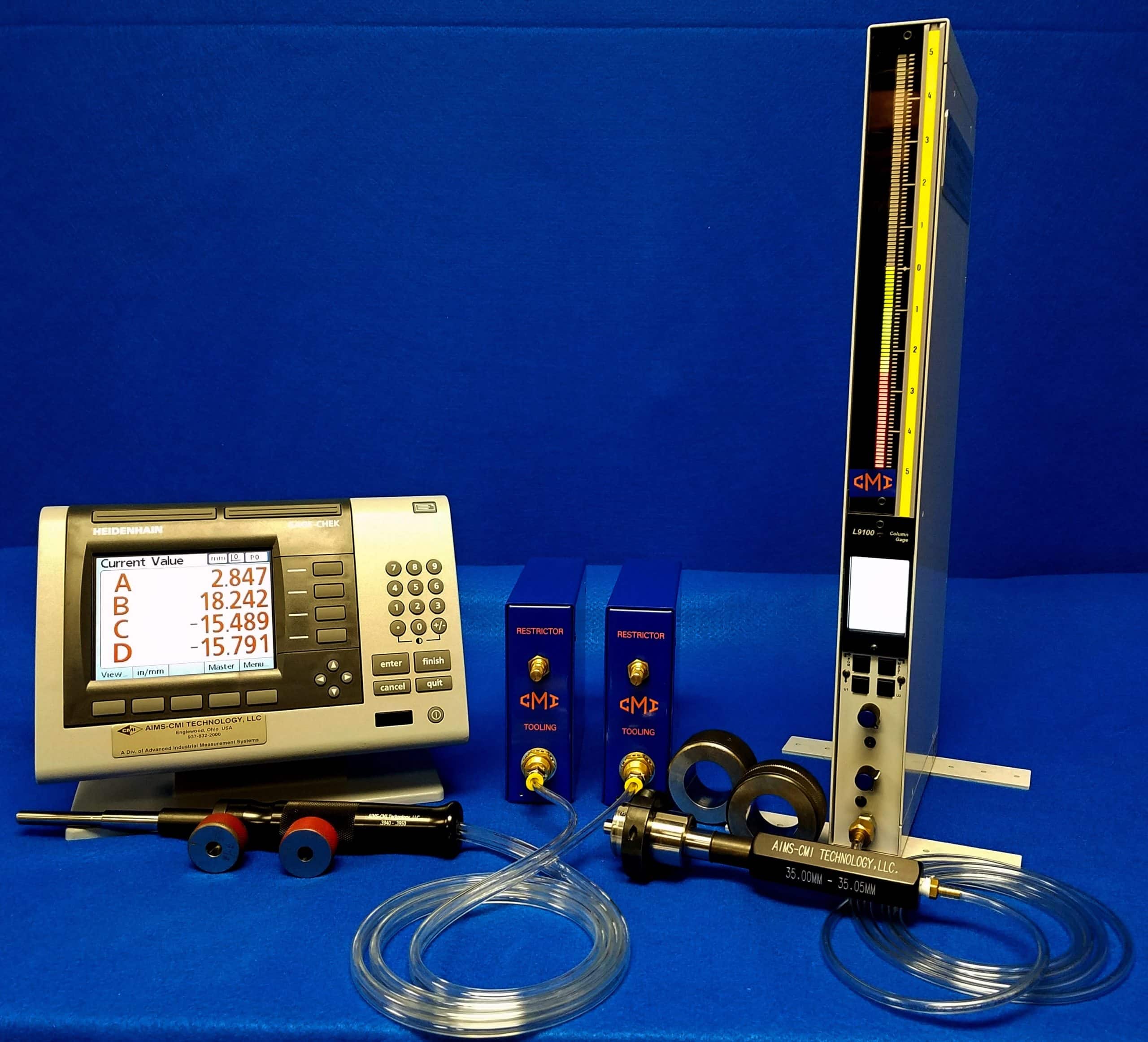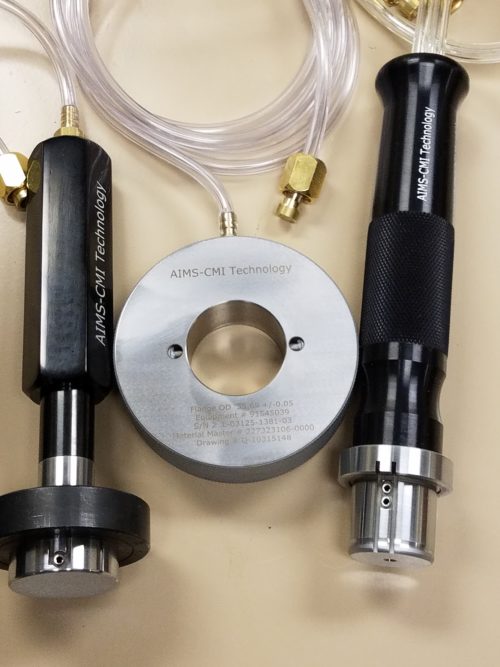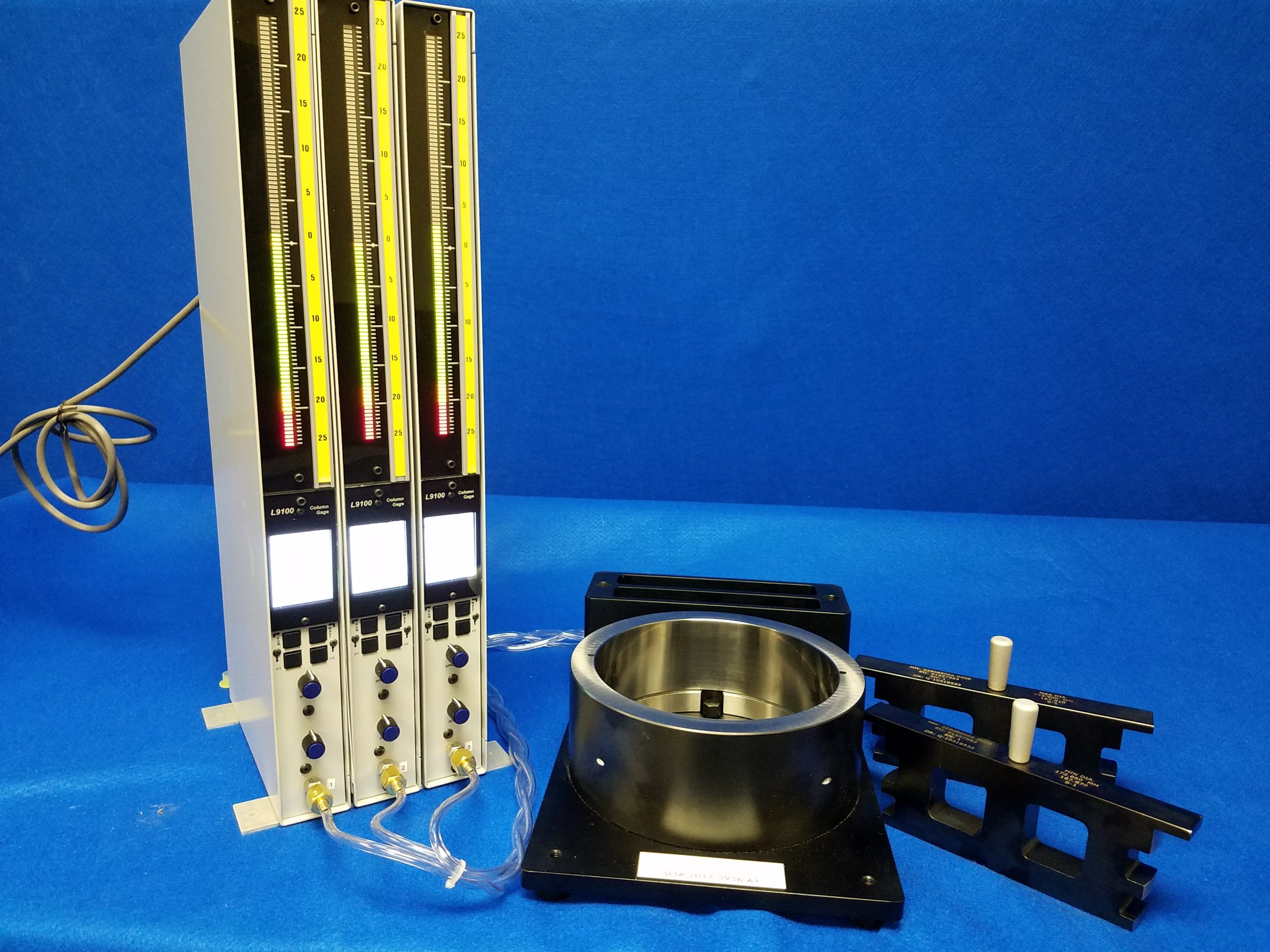
Original equipment manufacturers and suppliers regularly invest in solutions and technologies that allow them to create accurate parts. Each component must meet various specifications for dimensional accuracy to ensure it will function well in its intended application. Manufacturers rely on several types of measurement tools to check part dimensions and tolerances, ensuring precision machine tools produce parts within the correct measurements. Air gauging has become a popular method for verifying part accuracy, especially on parts with complex geometries that are difficult to access.
 What is Air Gauging?
What is Air Gauging?
Air gauging uses air flow and pressure to check a part’s measurements. A fixed relationship exists between flow and pressure—as one increases, the other must decrease. When unrestricted, air flow increases while air pressure decreases. When an object moves closer to the flow of air, airflow decreases due to obstruction and causes air pressure to build.
An air gauge uses these laws about airflow and pressure to measure a part’s dimensions. The air gauge produces regulated air flow through a nozzle. Moving the workpiece closer to this nozzle lessens the airflow and increases pressure. Fully obstructing the nozzle of the air gauge device reduces airflow to zero and creates a pressure equal to that of the original unrestricted airflow. The air gauging process will show dissimilar measurements in airflow and pressure when a part has been machined outside of acceptable tolerance ranges.
Air Gauging Systems
Multiple types of air gauging systems exist, including:
Back Pressure Bleed Systems
This air gauge system has an air pressure regulator to adjust and control the incoming air pressure. It has two master settings (minimum and maximum) based on the tolerances of the workpiece to allow for linear measurements along the entire measurement range. Back pressure bleed systems can accept tooling from other air gauging systems, making the machines very versatile. This two-master system can also be calibrated to accommodate worn or damaged tooling.
Differential Systems
Differential air gauging systems divides the air stream into two fixed restrictions. One air stream ends at a zero value, which helps to balance the pressure of the other air stream that ends at a plug or air ring. A differential pressure meter measures the differences between the two air streams. This type of system requires specific tooling for each magnification factor and will not function well with damaged or worn tooling because of the single point of calibration.
Flow Systems
Flow systems rely on flowmeter tubes with floats, and changing magnification requires changing out scales and flow tubes. Another two-master system, flow systems offer similar tolerance capabilities to back pressure bleed systems. Flow systems feature larger nozzles because they use higher levels of air. These systems can accommodate longer hoses for parts that may have long tubes or deep holes.
CMI Technology Air Gauging Capabilities & Processes
At CMI Technologies, we design, manufacture, and distribute air gauging systems for accurate parts measurement. We manufacture a range of simple and complex air gauging systems, including complete systems, electronics, displays, air jets, air plugs, air rings, and pre-programmed applications.
CMI handles the entire system from start to finish, including pre-programming and setup of air gauging tools. Our experienced team thoroughly reviews the application and offers an ideal solution for the customer’s specific manufacturing processes. We provide our engineering, technical, and manufacturing expertise to a variety of industries, including automotive, medical, appliance, energy, aerospace, and consumer goods.

 What is Air Gauging?
What is Air Gauging?